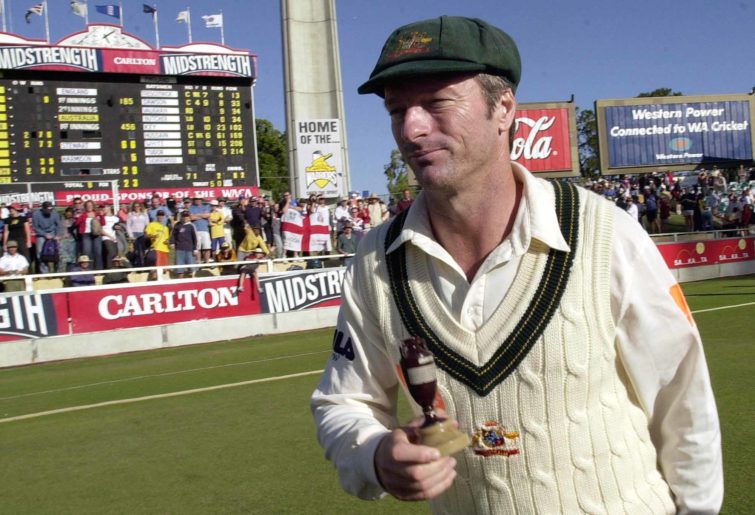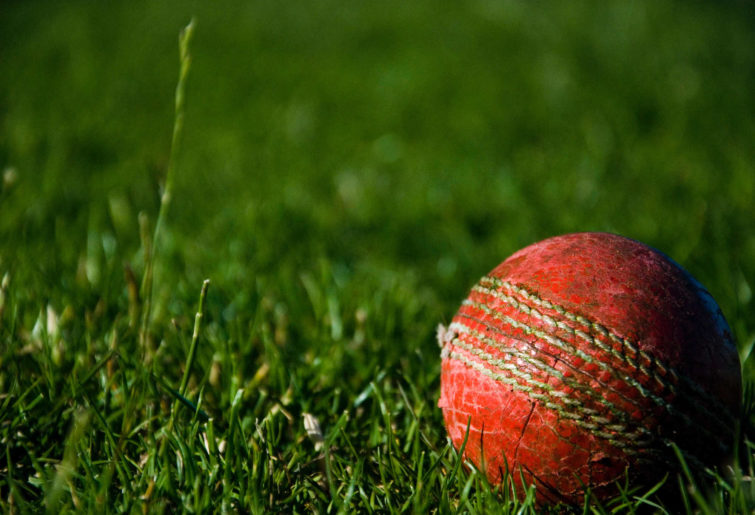As the winning runs were scored, I glanced at Allan Border – his shoulders sagging and slumped in cold resignation – and I felt the chill of sadness rise within me.
That distant West Indian summer of 1988/89 had been tough to watch. The Aussies were swept away in the first three Test matches, before winning on a dry, spinning pitch in Sydney and garnering the best of a draw in Adelaide.
My quiescent PTSD, lingering from the 1984/85 trauma, re-emerged from its remission. The pattern was frighteningly familiar, even if the Australians “lost better” in 1988/89 than they did four years earlier.
But it was in the one-dayers where we found some measure of redemption. Competitive throughout, the Aussies twisted the West Indian tail and gave it a yank.
Now I am perched atop the Doug Walters Stand, with some uni mates, watching the deciding match of three finals. I have rarely cheered so hard in support of my team. Not just because I wanted to see my pride in the fight reflected in triumph, but also because I suspected my sub-continental mates were secretly barracking for the opposition.
Throughout the match, storm clouds lurk over my right shoulder and rain occasionally sweeps across the ground.
Batting first, Australia are making steady progress when the first utterly unwelcome interruption occurs. But the scintillating hitting which occurs after the break makes my heart race and leaves my voice hoarse. Dean Jones and Steve Waugh are on a rampage: swishing to the fence, running like demons up and down the pitch and swatting the occasional six.
The euphoria in the crowd is palpable. It’s like the concrete stands have awoken – with thousands of uncontrolled limbs and a multitude of hysterical voices – to converge upon the players. A pitch invasion – born of religious ecstasy – seems a genuine possibility.
Thanks to a final ball six from a Steve Waugh lofted cover drive, the Aussies end on 226 from their 38 overs. In that era, at that ground, it was a difficult total to chase down, even with the luxury of a full set of 50 overs. From a mere 38, the score was nigh impregnable. I could almost see my captain raising the World Series Cup in triumph.

Australian captain Steve Waugh looks over the moon to have retained the Ashes. (AP Photo/Rick Rycroft)
When the Windies lose Gordon Greenidge and Richie Richardson – and falter at 2 for 4 – I feel as close to certain as I could, in a two-horse race, that the game is won.
In the meantime, a bumptious Mexican wave is surging majestically around the ground. But with each revolution, I am in more and more danger of being sullied by partially full beer cups, chicken bones, meat pie crusts and other detritus of uncertain origin. Suddenly a solution emerges. I reach beneath my seat, find my umbrella and create the protective shield I require above my head.
It’s only when I see my Indian mate ducking and weaving, with ever increasing agitation, that I realise I’ve become a target for every well-aimed missile in the Doug Walters Stand. I feel sorry for my unprotected friend; until I remember he’s cheering for the Windies! Then I decide he deserves everything he cops.
Suddenly, the rain returns and the players again leave the field.
When battle is finally rejoined, the Windies face the infinitely less daunting task of scoring just 108 runs in 18 overs.
You see, this is before Messrs Duckworth and Lewis – cricket legends, to be sure – have put their boffin heads together. In the summer of 1988/1989, rain-affected ODIs are still decided by a linear equation of runs per over multiplied by the number of overs available. That the Aussies sustained their run-rate for 38 overs and the Windies only had to match that rate across a mere 18 overs was, at the time, unimportant.

I perform quick calculations in my head and still find some hope in my clinically optimistic mind.
Yet that flickering flame of hope is doused when Vivian Richards causes permanent damage both to the ball and the advertising hoardings at mid-wicket with two thumping shots from Terry Alderman’s first over after the break. The momentum has changed.
From then onwards the outcome is pre-ordained. The victory which seemed certain in my mind is now replaced by an equally certain dread. And then, as if to tattoo my misery onto my brain, King Viv seals the West Indian win by clouting a behemoth of a six into the Ladies Stand… followed by celebrations worthy of the heavy-weight champ he resembles.
Then I see Border – utterly forlorn – wandering aimlessly from the ground, as though he were a little lost. After years of West Indian punishment, I wanted to see my hero enjoy a moment of triumph. Yet that, too, had been washed away. And suddenly my face is in my hands and I’m weeping!
I’m weeping in the Doug Walters Stand!
It’s been a tough summer – nay, a tough decade – and I’m just crushed by the injustice of this outcome. Absent the rain, the game and the series were won.
My West Indies-loving Indian mates console me by saying something about “winning in accord with the rules”. I respond, between gasping sobs, that the Windies won a game of maths, not a game of cricket.
But, to my shame, I’m still sitting in the Doug Walters stand – surrounded by the rubbish which had fallen from the heavens – and I’m blubbering like a child.
The injustice.
Oh, the injustice!






























































































